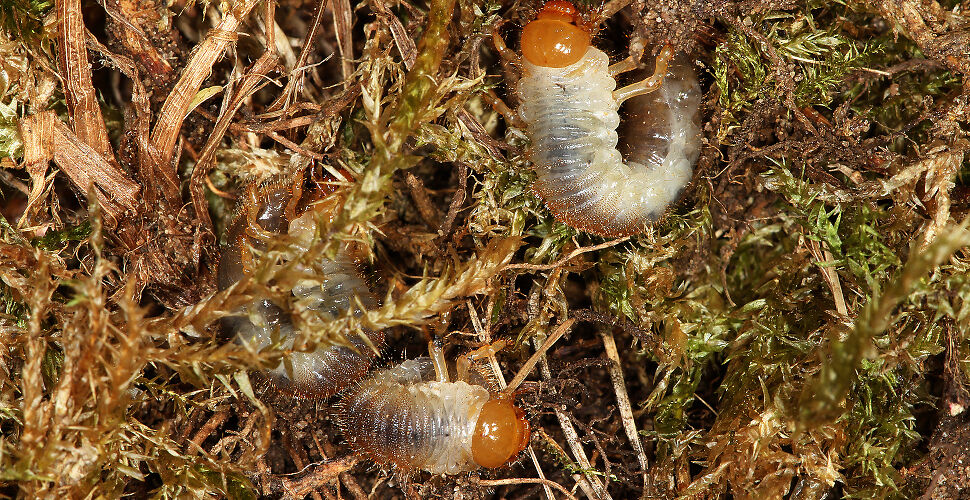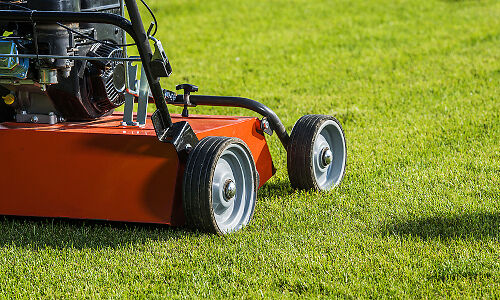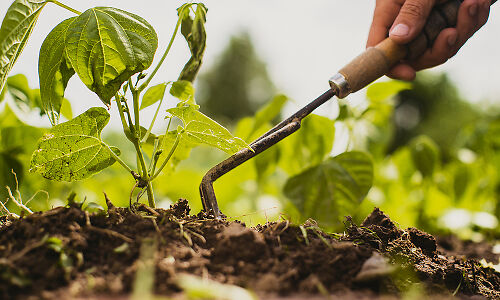
March 16th, 2023 by
Preventing and dealing with critters that destroy your grass
Lawns tend to occupy the largest areas in our gardens and can actually make much more of an impact than plants due to the size of the space that they cover. Unfortunately, this can be a negative one as much as a positive one and if yours becomes victim to a pest infestation, you will soon see this.
The most obvious signs of pests in your grass are patches turning yellow or brown and being able to easily pull it out due to weak or dead roots. You would see these signs long before you spot any of the pests themselves as they live in the soil, away from sight (though you may get birds showing more interest and pecking at the surface).
Common pests include leatherheads and chafer grubs and they are bad news for lawns. Once you have them, getting rid of them can be very difficult so the best strategy is always to do what you can to prevent them. However, if you do find you have an issue, there are a few things you can try to do to resolve the issue. We’ll take a look at both in this article.
Preventing a lawn pest infestation
The good news is that preventing pests is very achievable and straightforward; it’s really just about good lawn care. Strong, healthy grass is better equipped to resist pests and disease so looking after your grass will help to keep it pest-free as well as looking good. Incorporate these activities into your lawn care regime:
Scarify
Scarifying is the process of removing excess dead organic matter from the roots of the grass. This clogs the surface and prevents sunlight, rain, and lawn treatments from getting through to the roots. Most lawns will only require this once a year in either spring or autumn.
Aerate
Aerating the lawn (pushing holes into the soil) helps to loosen the soil and create better drainage. Leatherheads (crane fly grubs) in particular are attracted to very wet soil so preventing it from becoming waterlogged will help deter them. Use an aerator tool or a garden fork, particularly in the spring and autumn.

Mow
Mowing the grass has the obvious purpose of keeping it neat but it will also help it grow. Keeping the grass shorter allows sunlight and rain to penetrate to the roots and cutting also encourages growth and helps to thicken the grass. Don’t go shorter than around 2.5cm as cutting it too short can weaken the blades and make it more vulnerable to pests.
Treat
Soil health is an essential part of horticulture so any steps you can take to improve it will deliver results. Adding organic mulch will certainly help, as will adding extra nutrients through treating with supplements like iron sulphate. As well as enabling grass to grow stronger, iron sulphate makes the soil slightly more acidic, which deters grubs like leatherheads. Better soil will also attract more earthworms and these will, in turn, improve the quality further, helping to aerate and turn the soil as well as process decomposing organic matter and create compost through their waste.
Weed
We know that weeds are unsightly, but they also help to attract pests so getting rid of them is really important. Pulling them out is the best method but make sure you get the roots otherwise they’ll just come back. The good news is that improving grass and soil health will help to resist weeds so attending to the other tasks should minimise them.

Dealing with infestations
If you are unlucky enough to find you have a pest infestation, it’s not an easy task to resolve it but there are a couple of things you can try in addition to improving general lawn care, as discussed:
Organic insecticide
If the issue is aphids, red mites, green flies, or lice, there is an organic insecticide that you can use that won’t harm plants. Pyrethrum can be used on all plants, even fruit and veg.
Nematodes
Nematodes are bacterial worms that kill pests such as chafer grubs and leatherheads. Introduce them into the soil to try to combat the infestation but make sure you have identified which pest it is that you are dealing with as different nematodes work on different pests.
Comments
Leave a reply
Your e-mail address will not be published. All fields are required


